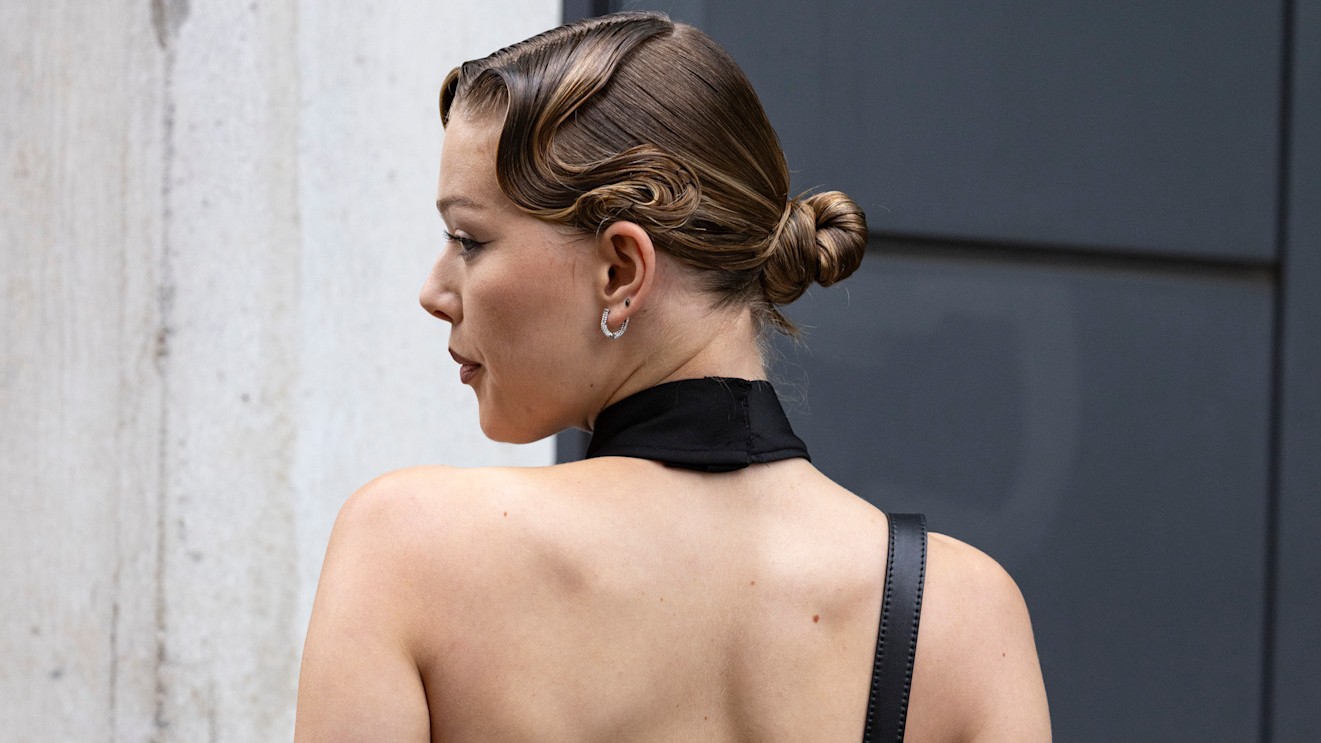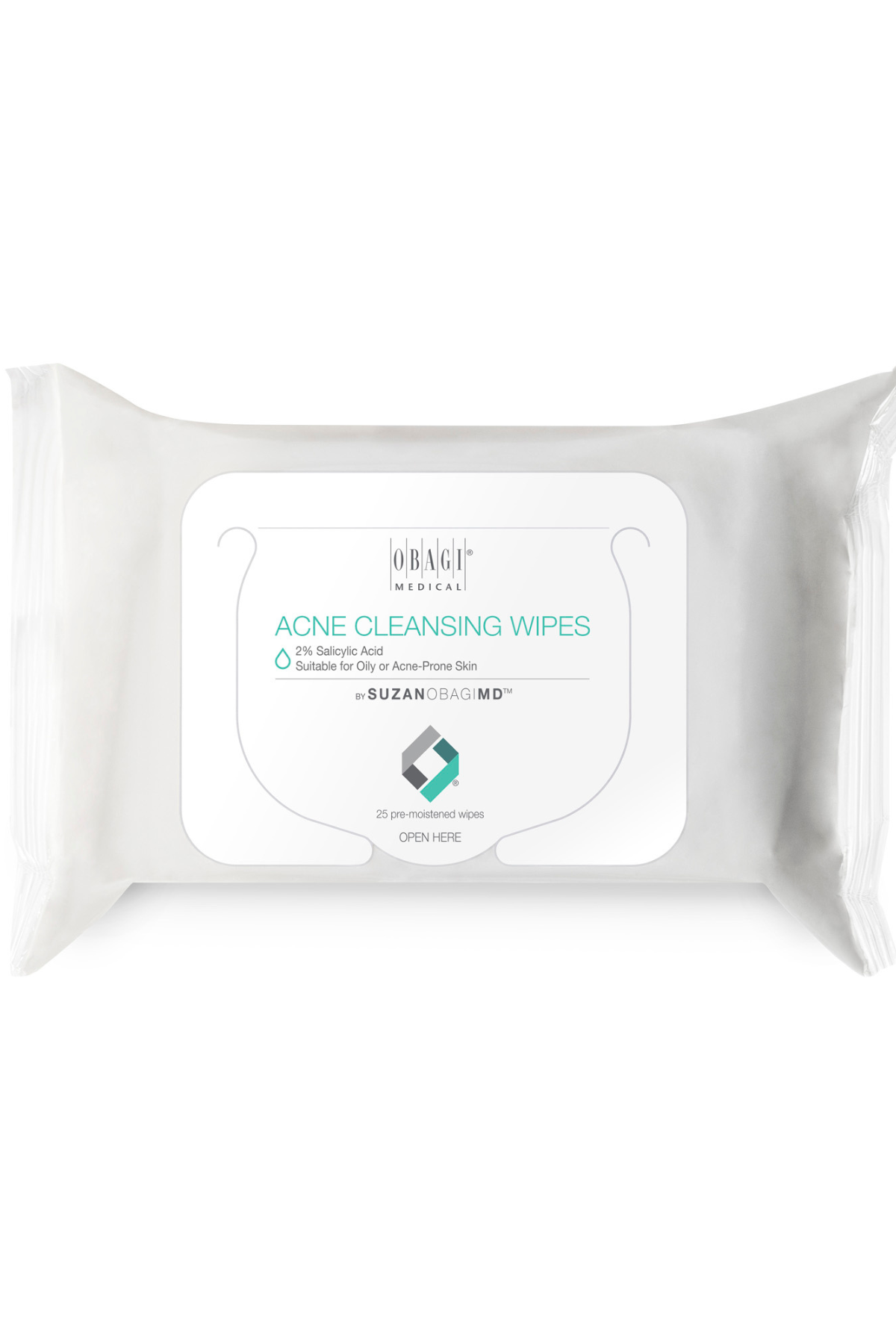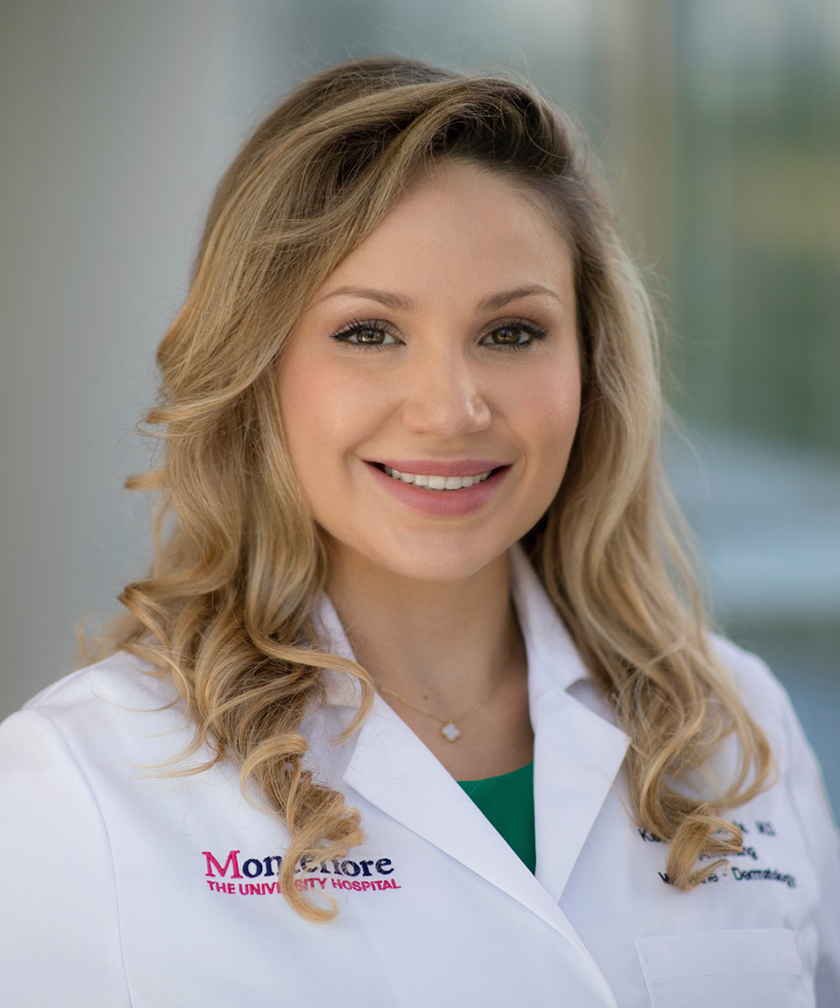How to Get Rid of Back Acne, According to Dermatologists
Bye, bacne.

Bacne (also known as back acne, if we're getting technical) is hands down, without a doubt, one of the most annoying obstacles I’ve had to deal with as a girl with acne-prone, ultra-sensitive skin. Here's the thing: anywhere you have skin, you can have acne—whether it be fungal, blackheads, or cystic.
The face is the most talked-about location, but it’s also common to experience breakouts on your back. While one of the best spot treatments can undoubtedly tackle a pimple or two, and an amazing body wash can definitely decrease inflammation, you may need to make a few more significant changes to your overall routine to actually get rid of bacne once and for all.
The good news: there’s a pretty hard and fast formula for calming down body acne. And even better, skincare brands across the globe are constantly releasing products that specifically target those pesky bumps on your body and back. For some, nixing bacne may be as simple as showering after working up a sweat. For others? You might need to pay a visit to your dermatologist and get on a prescription regimen. It turns out, even changing up your go-to clothing items can calm bacne down.
Keep reading for the full breakdown on bacne — from the different types to the products that keep it at bay. Board-certified dermatologists Nkem Ugonabo M.D., M.P.H. and Kseniya Kobets M.D., M.H.S, FAAD explain everything you need to know.
The Best Products to Get Rid of Body Acne

Both Dr. Ugonabo and Dr. Kobets are big fans of this body wash for acne-prone skin because it’s less irritating than other over-the-counter options. “Some other salicylic acid washes can be harsh on the skin, but this formula from CeraVe includes ceramides, which help it make it a gentle exfoliant and less likely to cause irritation.”

Continuing your acne-fighting routine after you shower with this body spray. It’s formulated with salicylic acid to help unclog pores and treat existing breakouts. The best part? The spray makes it ideal for getting product in hard-to-reach areas.

If you go to the dermatologist, this will most likely be one of the products they recommend. Dr. Kobets calls it one of her favorites for erasing bacne for its ability to "clean out the pores of oil and dirt, and it can be anti-inflammatory." It’s a no-frills option that contains all the goods (read: salicylic acid) and none of the no-no ingredients (think: oils). It can be a little drying, though, so try to follow up with a moisturizer for acne-prone skin.

If you’ve long admired the brand’s drying lotion for face pimples, you’ll love this body wash for body acne. It’s formulated with glycolic acid to exfoliate the skin and slough away dead cells. This one is a bit gentler than salicylic acid alternatives, making it a must for anyone with sensitive skin.

If you’re not a fan of showering at the gym, we beg you: toss these towelettes in your bag. One of the number one causes of bacne is letting sweat stay on your skin for long periods of time after exercising, notes Dr. Kobets. Luckily, the Obagi Medical Acne Cleansing Wipes are the next-best thing to an actual bath. They have salicylic acid (sensing a theme here), as well as witch hazel to fight breakouts. Give yourself a good wipe down and then hop in the shower at your earliest convenience.

As Dr. Kobets explains, "Silicones and other conditioning agents—especially oils—that someone puts into the hair can accumulate on the skin of the back and clog pores." Not to fear, because this derm-formulated shampoo was made specifically with face and body acne in mind. Nothing on its ingredient list will contribute to breakouts, so you can wash your hair and wear it down without worry.

Looking for a little extra something to add to your routine? Scoop up this super-charged body scrub. It has salicylic acid (of course), as well as lactic and glycolic acids, to get rid of all the gunk and dead cells that have accumulated on your skin. It also features one of our all-time fave ingredients, niacinamide, to help with redness and inflammation.

"For people who have both sensitive and eczema-prone skin, I suggest using a hypochlorous acid spray," says Dr. Kobets, noting, "I specifically like the SkinSmart brand." With just a few spritzes, the product decreases inflammation, soothes skin, and kills any yeast or bacteria in a gentle way. Plus, it can be used either immediately after cleansing or when you don't have time to shower after a sweaty day or workout.
What Is Bacne?
“Back acne is often used as a catch-all term that refers to breakouts on the body,” says Dr. Ugonabo. And, just like acne on the face, it can present differently on different people. You may have blackheads and whiteheads, cysts, or inflamed red bumps.
But there’s a catch. Sometimes, the bumps on your back aren’t actually acne at all. “There are other ‘breakouts’ that can mimic acne because they look like pimples,” says Dr. Ugonabo. “You could have folliculitus, which refers to inflamed hair follicles that are caused by the buildup of sweat and dirt.” There’s also the chance that your bumpy back is indicative of a follicle-blocking skin condition called keratosis pilaris (KP).
How to Treat Back Acne
If you have mild or moderate acne (think: whiteheads, blackheads, and some red bumps), you’ll probably be able to manage your breakouts with over-the-counter products and a few lifestyle changes. But if your body breakouts are painful or more severe, make sure to touch base with your board-certified dermatologist.
Get exclusive access to fashion and beauty trends, hot-off-the-press celebrity news, and more.
Don’t Pop and Pick
This should go without saying, but don’t start squeezing, popping, and picking your pimples. It will introduce new bacteria, can lead to infection, and quite frankly, will make matters worse. “This is only going to increase your risk for dark spots, hyperpigmentation, and scarring," says Dr. Ugonabo
Avoid Tight Clothing
If you’re dealing with folliculitis, friction against the skin is only going to perpetuate the problem. And if it’s actually acne? Rubbing is going to contribute to inflammation. As such, Dr. Ugonabo says your best bet is to reach for water-resistant, sweat-wicking, loose clothing.
Don’t Sit in Sweat
“Waiting too long to shower after a workout can increase the likelihood of a breakout,” says Dr. Ugonabo. After a gym session, take a quick rinse "as soon as possible," urges Dr. Kobets. While a full shower complete with one of the best salicylic-acid body washes is certainly ideal, it’s sometimes not practical in the moment. If you’re in a pinch post-sweat, give your body a rub down with a cleanser wipe or spray on a hypochlorous acid spray.
Switch Up Your Shower Routine
Take a long, hard look at your shampoo and conditioner. They could be to blame for your breakouts. As you wash your hair, the product runs down your back. "It may seem like the skin has been washed off," says Dr. Kobets, "But there are studies that show that skin still has remnants and residue left behind by shampoos and conditioners on the shoulders and upper back."
If the products aren’t formulated with acne-prone skin in mind, they could end up clogging pores. Make sure to look for shampoos and conditioners that are free of oils and labeled non-comedogenic. Even better, Dr. Kobet shares that dandruff shampoos made with over-the-counter Nizoral 1 percent ketoconazole can actually be used as a body wash to treat fungal acne.
Dr. Ugonabo also recommends adding some treatment products to your shower routine via a body wash. “I like ingredients such as benzoyl peroxide, salicylic acid, and glycolic acid,” she adds. Products with these ingredients should help clear up breakouts, but it won’t happen overnight. Give them a good six weeks to start working.
Talk to a Dermatologist
“If you’ve tried over-the-counter products, but the acne isn’t improving or is getting worse, I highly recommend seeing a board-certified dermatologist,” advises Dr. Ugonabo. She adds that a dermatologist will be able to confirm that you are, in fact, dealing with back acne and not something else entirely and write you a script for a prescription medication.
Sometimes, your doctor will recommend a topical wipe or cream such as clindamycin or Arazlo—a favorite of Dr. Kobel's. In others, they’ll suggest oral antibiotics, like doxycycline.
Why Trust Us
Emma Aerin Becker is an experienced beauty writer, focusing on shopping roundups, digital features, and trend stories. She's a regular contributor to Marie Claire, and has words in Byrdie, Page Six Style, People magazine, and more. She spoke with two board-certified dermatologists to compile this list of the best products and techniques to nix back acne.
Marie Claire is also a leading bodycare expert, having produced content about the best anti-acne body washes, body scrubs, and moisturizers. We're constantly scanning and reviewing new launches, as well.
Meet the Experts

Dr. Kseniya Kobets is board-certified dermatologist in Westchester, NY, where she works at the Director of Cosmetic Dermatology at Montefiore Einstein Advanced Care. In addition to skincare, Dr. Kobets is Cosmetic Fellowship Trained, specializing in lasers, fillers, botox, and PRP. She graduated from Yale School of Medicine in 2010.

Dr. Ugonabo is a native New Yorker who received her Bachelor of Arts in Human Biology from Stanford University. She then worked as a management consultant at McKinsey & Company before completing her Master of Public Health degree at Harvard and her M.D. degree at the University of Michigan. She returned to the New York area for her Dermatology Residency at the prestigious NYU Medical Center where she was appointed Chief Resident in her final year. During residency, she served on several institutional committees and was selected to serve as Chair of the Housestaff Patient Safety & Quality Improvement Committee. She also extensively pursued research involving the laser treatment of pigmented lesions, patient safety, combination treatments involving filler and lasers, and the mental health of acne patients taking Accutane. At residency graduation, she was awarded the Dr. Irwin Freedberg award for the resident who best represents the field of dermatology in the world of medicine. Following residency, Dr. Ugonabo was an American Society for Dermatologic Surgery (ASDS) Cosmetic Dermatologic Surgery Fellow at UnionDerm in New York City where she worked as a sub-investigator on multiple clinical trials investigating the treatment of acne scars, photodamage, cellulite, muscle stimulation and melasma.
Dr. Ugonabo has published numerous articles in peer-reviewed journals including the Journal of American Medical Association Surgery, Journal of the American Academy of Dermatology, Dermatologic Surgery, Journal of Cosmetic Dermatology, British Journal of Dermatology and Journal of Drugs in Dermatology. She has presented at numerous national and local meetings including the American Academy of Dermatology (AAD) Annual Meeting, American Society for Laser Medicine and Surgery (ASLMS) Annual Conference, American Society for Dermatologic Surgery (ASDS) Annual Meeting and Winter Clinical Dermatology Conference.

Samantha Holender is the Senior Beauty Editor at Marie Claire, where she reports on the best new launches, dives into the science behind skincare, and shares the breakdown on the latest and greatest trends in the beauty space. She's studied up on every ingredient you'll find on INCI list and is constantly in search of the world's glowiest makeup products. She's constantly tracking the biggest nail and hair trends to pop up in the beauty space, going backstage during fashion weeks, tracking celebrity looks, and constantly talking to celebrity hair stylists, nail artists, and makeup artists. Prior to joining the team, she worked as Us Weekly’s Beauty and Style Editor, where she stayed on the pulse of pop culture and broke down celebrity beauty routines, hair transformations, and red carpet looks. Her words have also appeared on Popsugar, Makeup.com, Skincare.com, Delish.com, and Philadelphia Wedding. Samantha also serves as a board member for the American Society of Magazine Editors (ASME). She first joined the organization in 2018, when she worked as an editorial intern at Food Network Magazine and Pioneer Woman Magazine. Samantha has a degree in Journalism and Mass Communications from The George Washington University’s School of Media and Public Affairs. While at GWU, she was a founding member of the school’s HerCampus chapter and served as its President for four years. When she’s not deep in the beauty closet or swatching eyeshadows, you can find her obsessing over Real Housewives and all things Bravo. Keep up with her on Instagram @samholender.



